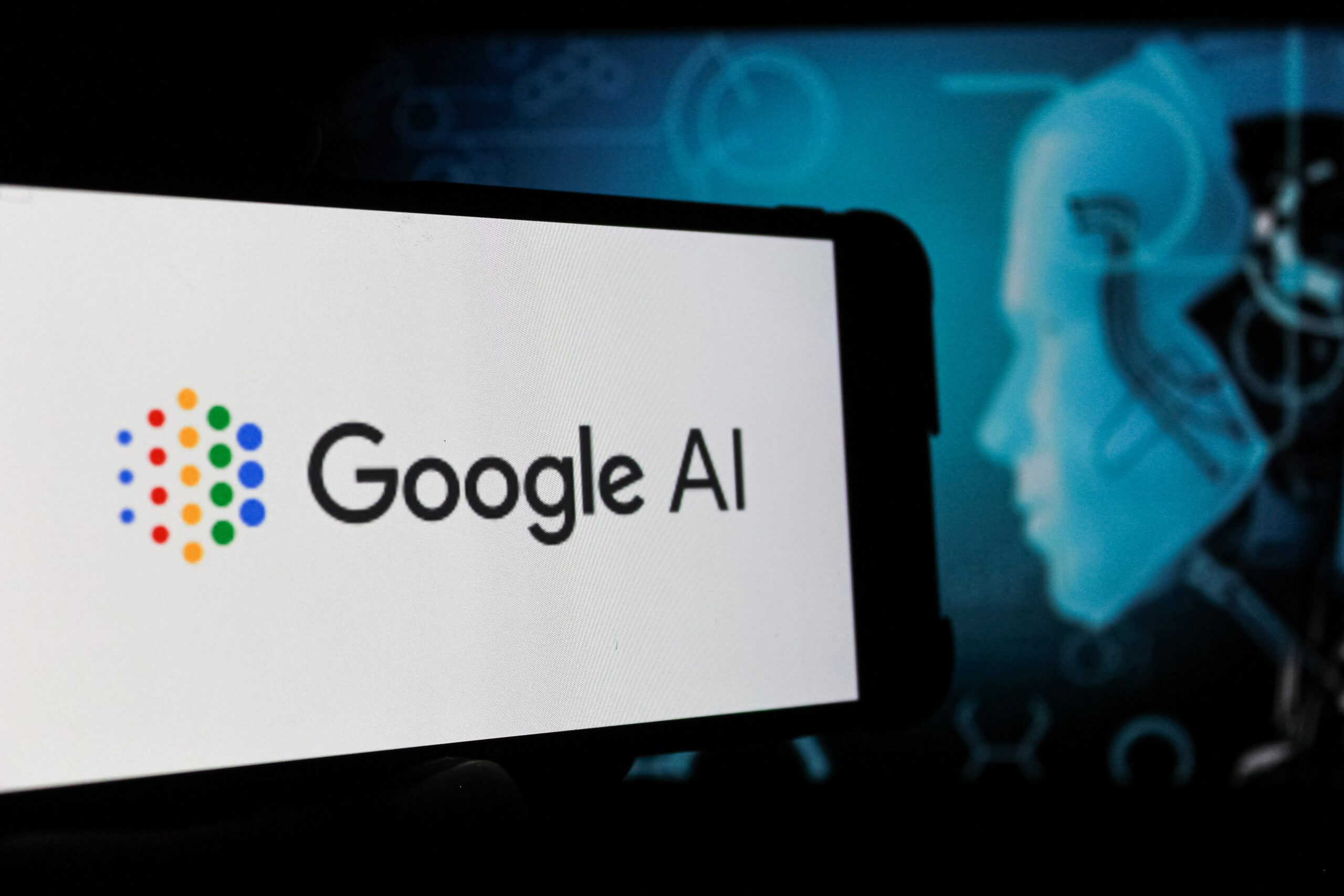AI/ML
Google I/O 2025: AI Takes Center Stage in a Future-Forward Showcase
Google I/O 2025 showcased a future deeply interwoven with artificial intelligence, with the company’s Gemini family of AI models taking center stage. Enhancements like native audio outputs and a “Deep Think” reasoning mode for Gemini 2.5 Pro underscored a significant leap in AI capability, forming the backbone of numerous new features across Google’s ecosystem.

The tech world held its breath this week as Google hosted its annual I/O developer conference, and the 2025 edition delivered a firehose of announcements. Held at the Shoreline Amphitheatre in Mountain View, California, the event buzzed with anticipation, and Google delivered a keynote packed with groundbreaking updates, reinforcing its commitment to artificial intelligence as the driving force behind its innovations across nearly every product and service.
This year’s I/O felt distinctly focused on weaving AI deeper into the fabric of our digital lives. From revolutionary updates to existing services to the unveiling of entirely new AI models and tools, the message was clear: Google is betting big on a future powered by intelligent systems.
The Highlight: Project Chimera & The Gemini Ascendancy
While Google didn’t explicitly name one single “Project Chimera” in the keynote, the overarching theme clearly pointed towards a unified and significantly more powerful AI ecosystem, primarily driven by advancements in its Gemini family of models. The keynote emphasized making Gemini more capable, accessible, and integrated. This vision of a seamlessly interconnected AI layer, understanding and processing information across text, images, audio, video, and code, was the undeniable highlight.
The evolution of Gemini was showcased through several key announcements:
- Updates to Gemini 2.5 Flash and Pro models: These workhorse models received significant boosts, including native audio outputs for more natural and direct voice interactions, moving beyond text-to-speech.
- “Deep Think” reasoning mode in Gemini 2.5 Pro: This new capability allows Gemini 2.5 Pro to engage in more complex, multi-step reasoning and problem-solving, tackling more challenging queries.
These core model enhancements underpin many of the specific product updates and new features announced.
Key Announcements from the Google I/O 2025 Keynote:
Google unleashed a torrent of AI-centric updates. Here’s a breakdown of the major reveals:
- Revolutionizing Search and Information Access:
- Expanded access to AI Overviews: More users will now see AI-generated summaries at the top of their search results, providing quick answers to complex queries.
- Search Live in AI Mode and Lens: This signifies a more conversational and interactive search experience. Imagine asking follow-up questions and getting refined results in real-time. Google Lens also sees deeper AI integration for understanding and interacting with the visual world.
- Gemini in Google Chrome: The browser will natively integrate Gemini, offering contextual assistance, summarization, and potentially content generation capabilities directly within Chrome.
- Enhancing Productivity and Communication:
- Personalised smart replies in Gmail: Moving beyond generic suggestions, Gmail’s smart replies will become more attuned to your individual writing style and context.
- Speech translation in Meet: Real-time speech translation in Google Meet will break down language barriers in global communications.
- Expanded access to Gemini Live’s camera and screen sharing capabilities: Making Gemini more interactive, allowing it to “see” what the user sees via camera or screen share for more contextual help.
- Next-Generation Generative AI Tools:
- Imagen 4: The next iteration of Google’s text-to-image model promises even higher fidelity, better prompt understanding, and more creative control over image generation.
- Veo 3: Google’s answer to generative video, Veo 3, showcased impressive capabilities in creating high-quality video clips from text prompts.
- Flow, a new AI filmmaking tool: This tool aims to assist creators in the filmmaking process, potentially from scriptwriting to storyboarding and even scene generation, powered by AI.
- Synth ID detector: Addressing concerns about AI-generated content, Google is improving its Synth ID technology to better detect and watermark AI-created media.
- AI in E-commerce and User Experience:
- Shopping in AI Mode: This will transform the online shopping experience, with AI guiding users through product discovery and decision-making.
- Agentic checkout: Imagine an AI agent that can handle the checkout process across different sites, simplifying online purchases.
- Virtual try-on tool: Enhancing online apparel shopping, this tool will use AI to allow users to virtually see how clothes might fit.
- Tools for Developers and the AI Ecosystem:
- Jules, an asynchronous AI coding agent: This AI assistant is designed to help developers write, debug, and manage code more efficiently, working alongside them.
- Support for Anthropic’s Model Context Protocol (MCP): Signifying a move towards greater interoperability, Google will support this protocol, potentially allowing for easier integration and use of different large language models.
- New updates to Deep Research and Canvas: These tools, likely aimed at researchers and creatives, will receive further AI enhancements to boost their capabilities.
- New Platforms and Subscription Tiers:
- Beam, a 3D AI-first video communication platform: Promising a more immersive and interactive way to communicate, Beam leverages AI to create novel 3D video experiences.
- Google AI Pro and AI Ultra subscription plans: To provide access to its most powerful models and features, Google is introducing new premium subscription tiers for its AI services.
- Glimpse into the Future: Hardware and OS
While the keynote was heavily software and AI-focused, there were nods to upcoming hardware and platform developments:
- A look at Android XR-powered smart glasses: Google provided a sneak peek at its vision for augmented reality, showcasing potential smart glasses powered by an XR-focused version of Android. This signals continued investment in immersive computing.
- Pixel 10 Series and Tensor G5 Chip (Expected): While not explicitly detailed in the provided keynote list, it’s highly anticipated that flagship hardware like the Pixel 10 series, powered by a new Tensor G5 chip optimized for these advanced AI models, will be formally detailed later in I/O or in the coming months. These on-device capabilities are crucial for realizing the full potential of the announced AI features.
- Pixel Fold 2, Wear OS 6.0, Pixel Watch 3, and Android 16 (Expected): Similarly, updates to the foldable line, wearables, and the next version of Android (Android 16) are expected to be deeply intertwined with the Gemini advancements and the Chimera-like ecosystem, focusing on privacy, AI integration, and enhanced user experiences.
Looking Ahead:
Google I/O 2025 painted a compelling picture of a future where AI is deeply embedded in nearly every digital interaction. The sheer volume of announcements centered around Gemini and its applications underscores Google’s strategy to lead in the AI era. From making search more intuitive and communication more seamless to providing powerful new creative and developer tools, Google is pushing the boundaries of what AI can achieve.
The introduction of subscription plans like AI Pro and AI Ultra also signals a new phase in how Google plans to monetize its cutting-edge AI capabilities. As these tools and features roll out, the focus will be on user adoption, ethical considerations, and the real-world impact of this AI-driven transformation.
Stay tuned to our website for more in-depth coverage and analysis of all the Google I/O 2025 announcements and hardware deep dives as more information becomes available.
AI/ML
AI Powers a New Wave of ‘Hard Tech’ Revolution
A new era of “hard tech” is emerging as AI accelerates breakthroughs in robotics, energy, space, and manufacturing—turning deep tech dreams into reality.

From autonomous drones to nuclear fusion startups, artificial intelligence is accelerating breakthroughs in physical technology like never before.
The tech world is experiencing a shift—from screens and software to steel and silicon. A new wave of innovation dubbed “Hard Tech” is making headlines, and at its core is a powerful catalyst: artificial intelligence.
Hard tech refers to industries that merge advanced physical engineering with deep scientific research, such as aerospace, robotics, energy, biotechnology, and manufacturing. These sectors have traditionally required long development cycles, heavy capital investment, and significant regulatory hurdles. But with AI rapidly reducing complexity, cost, and time-to-market, hard tech is experiencing an unprecedented surge.
Startups and corporations alike are integrating AI not just as an add-on, but as the driving engine behind their operations. Autonomous vehicles and delivery drones now navigate cities using real-time AI modeling. In biotech, machine learning algorithms are accelerating drug discovery timelines by years. Even space exploration and nuclear fusion—once limited by guesswork and experimentation—are becoming more predictable through AI simulation and predictive analysis.
One of the standout examples is in the energy sector. Companies like Helion and TAE Technologies are leveraging AI to manage the chaotic variables in nuclear fusion experiments—controlling plasma behavior and optimizing energy output. In transportation, AI is being embedded into robotaxi systems, electric vertical take-off aircraft (eVTOLs), and long-range drone networks, making logistics faster, safer, and more autonomous.
Investors are taking notice. Venture capital firms that once focused on SaaS and mobile apps are now funding next-generation materials, climate tech, and AI-powered robotics. The funding boom in hard tech is being led by figures like Elon Musk, Sam Altman, and Vinod Khosla—who believe the next trillion-dollar innovations won’t come from social media apps, but from real-world disruption enabled by AI.
What makes this surge unique is not just the technology—it’s the mindset shift. Entrepreneurs, scientists, and engineers are no longer working in silos. They’re building cross-disciplinary teams where physicists work with data scientists, and mechanical engineers pair up with neural network experts. The result is faster prototyping, smarter manufacturing, and solutions that are both scalable and impactful.
However, the rise of hard tech also comes with challenges. Building physical products still requires supply chain resilience, regulatory approval, and hardware expertise—areas where traditional tech firms often struggle. There are also ethical concerns around automation, job displacement, and the militarization of autonomous systems.
Still, the momentum is undeniable. As AI continues to mature, it is becoming the great enabler of hard tech—offering the tools to design, simulate, optimize, and operate systems that were once deemed too complex or too costly.We’re entering an era where breakthroughs in physical technologies—from energy to mobility to space—are happening faster and with greater precision than ever before. And at the heart of it all is a single, transformative force: artificial intelligence.
AI/ML
Google I/O 2025 – AI Everywhere!
-
Fashion8 years ago
These ’90s fashion trends are making a comeback in 2017
-

 Entertainment6 months ago
Entertainment6 months agoSquid Game Season 3 Trailer Teases a Brutal Finale: Gi-hun Returns for One Last Game
-
Fashion8 years ago
According to Dior Couture, this taboo fashion accessory is back
-
Entertainment8 years ago
The old and New Edition cast comes together to perform
-

 Science5 months ago
Science5 months agoVera C. Rubin Observatory Unveils First-Ever 3,200-Megapixel Images
-
Sports8 years ago
Phillies’ Aaron Altherr makes mind-boggling barehanded play
-
Business8 years ago
Uber and Lyft are finally available in all of New York State
-
Business8 years ago
The 9 worst mistakes you can ever make at work









